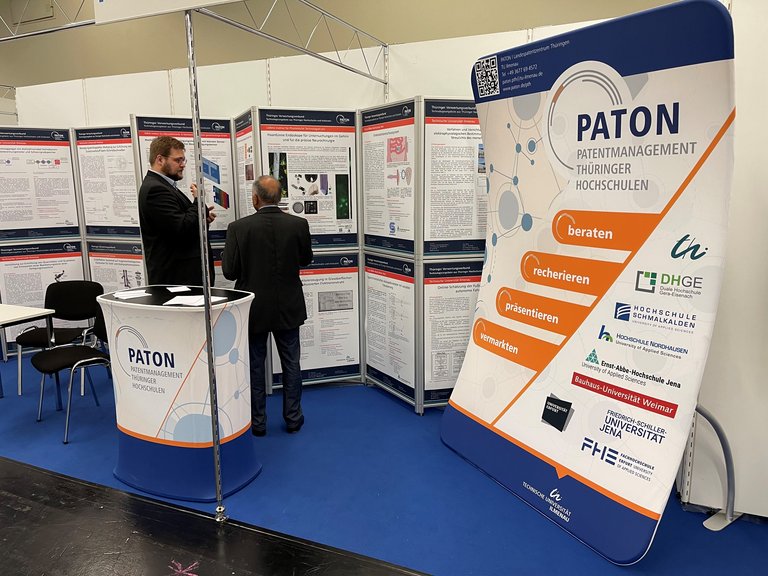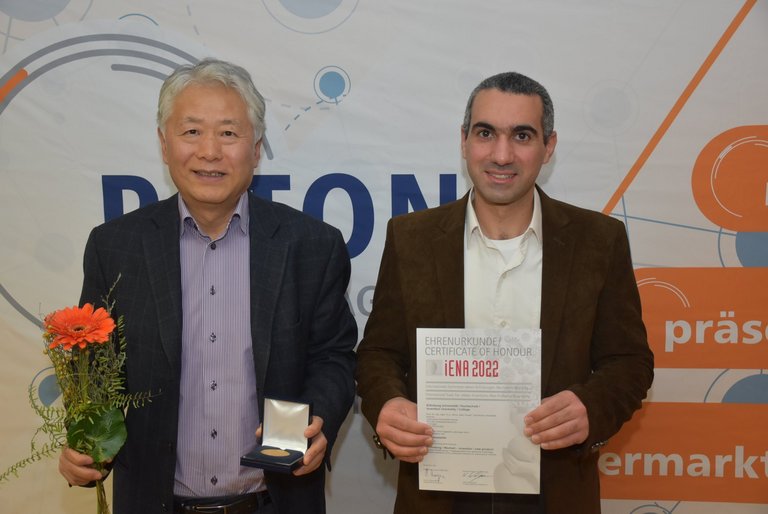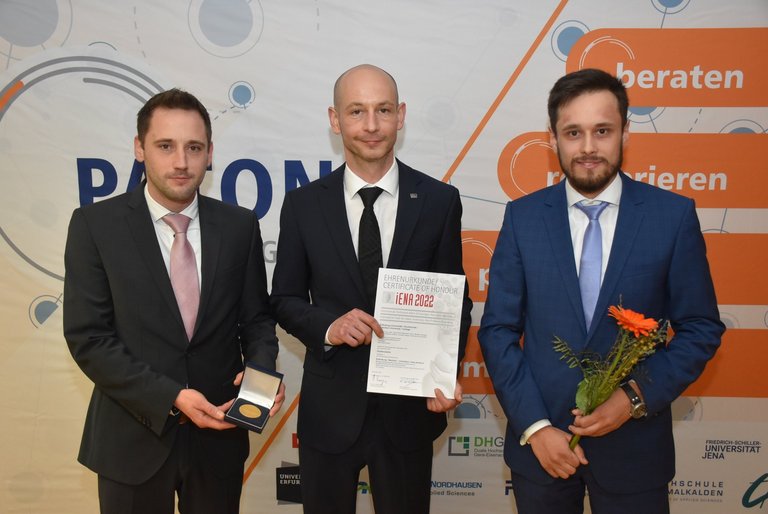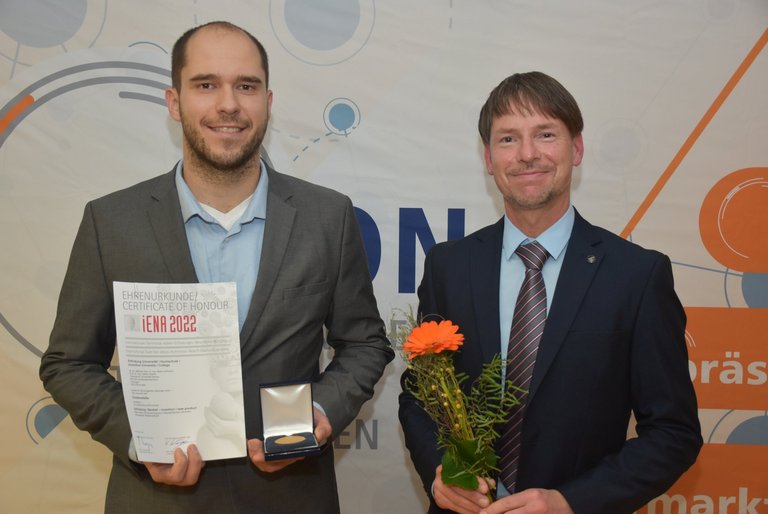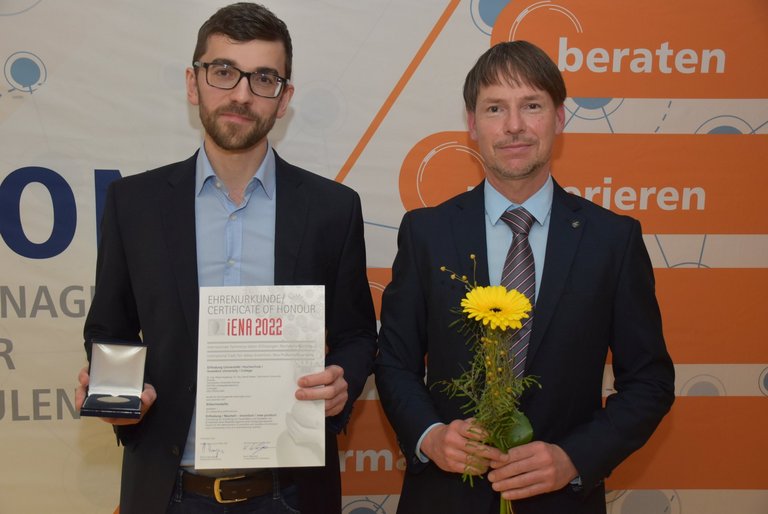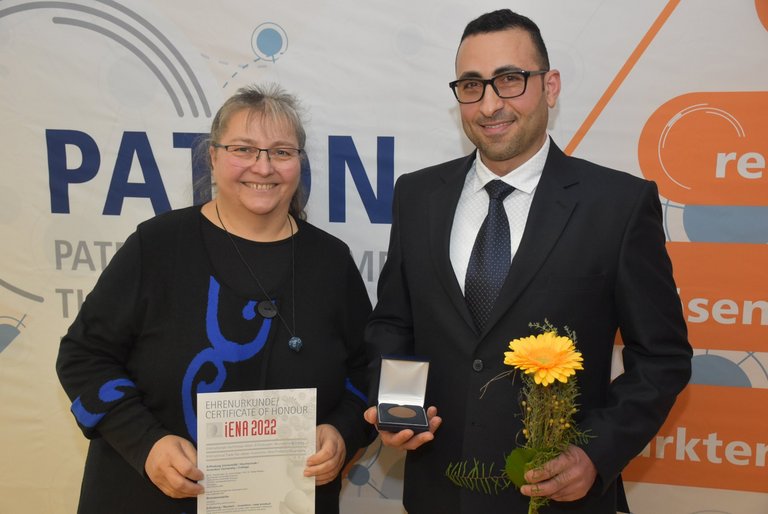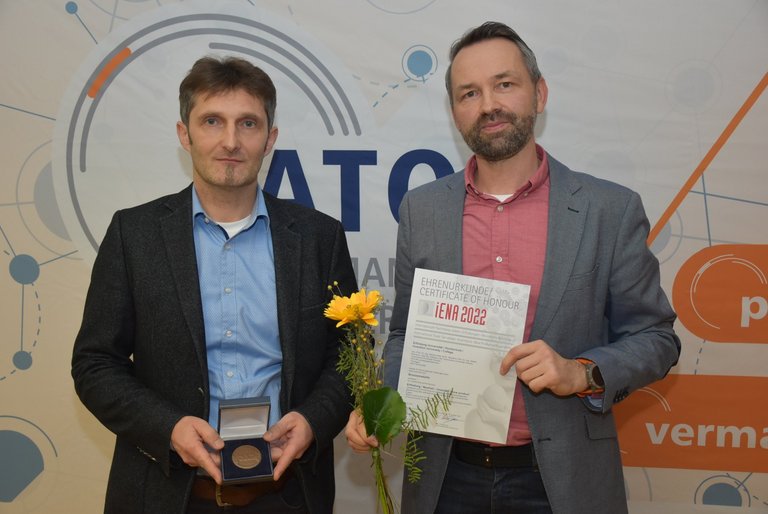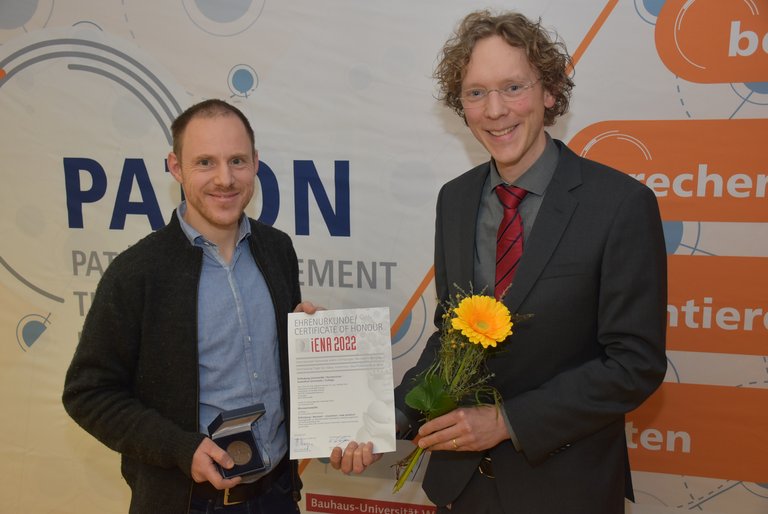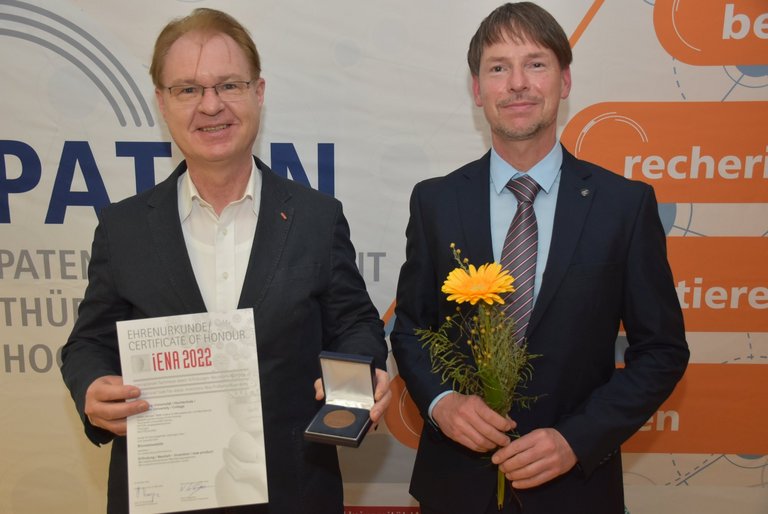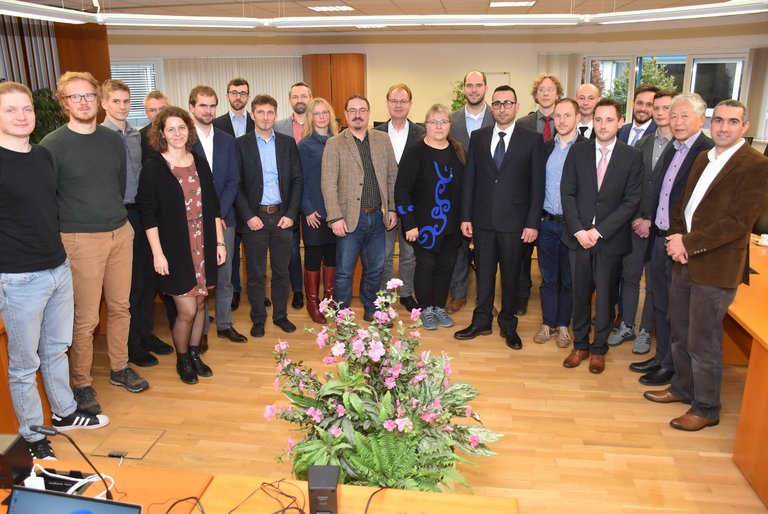Teams of inventors from TU Ilmenau have been honored at the iENA, one of the most important international trade fairs for ideas, inventions and innovations. The university's patents are thus among the best inventions from more than 500 submissions from 26 countries and regions. An expert jury honored all submissions from TU Ilmenau with gold, silver and bronze medals.
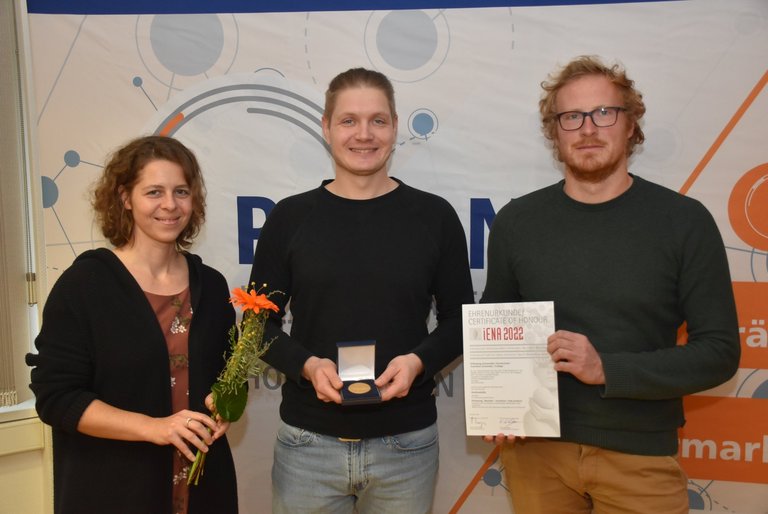
With an average of 20 patent submissions per year, the TU Ilmenau is one of the most inventive universities in Thuringia. These innovations are presented once a year at the inventors' trade fair iENA in Nuremberg. There, the Patent Center Thuringia PATON, which is responsible for the patent management of the Thuringian universities, presents the best patents from the TU Ilmenau and the universities of the Free State. After many years of successful participation in the iENA, all patents submitted by the TU Ilmenau were awarded for the first time this fall. Of the eight inventions, four were awarded gold medals, one silver medal and three bronze medals.
At the award ceremony in the TU Ilmenau Senate Hall, where the inventor teams received their medals, Prof. Jens Müller, Vice President for International Affairs and Transfer at TU Ilmenau, praised the excellent work of the researchers:
We look back on an extremely successful iENA. The fact that all of the submitted patents were awarded medals shows the appreciation for the application-oriented research at our university and emphasizes the importance of transfer as an important pillar of the TU Ilmenau. The inventions of the researchers are an important building block for transferring knowledge from the university into society.
Safe autonomous driving for drivers and pedestrians
The winning patents cover a broad range of innovative ideas and concepts from medical technology, artificial intelligence and audiovisual technology. A team led by Dr. Tobias Schwandt, research associate at the Virtual Worlds and Digital Games Group, won a gold medal for their concept to simulate an Earth-like atmosphere in space. Researchers Dr. Tobias Schwandt, Annika Neidhardt, Dr. Stephan Werner, Dr. Florian Klein and Prof. Dr. Wolfgang Broll can use sensor data to create a virtual environment for space travelers that - enriched with audio elements - is intended to improve their situational awareness and reduce stress. Their patent has given rise to the AVSPACE research project in cooperation with the European Space Agency (ESA). As early as next year, the team also plans to launch a startup based on their research focus.
Prof. Pu Li and Qais Yousef want to make road traffic safer for drivers and pedestrians. Their gold medal-winning patent for online pedestrian intention estimation for autonomous vehicles uses artificial intelligence to avoid accidents. Within milliseconds, it analyzes a pedestrian's facial expression and displays a prediction to the driver assistance system or autonomous vehicle as to whether the pedestrian wants to cross the road. If a pedestrian actually wants to cross the road, the car has more time to reduce its speed and let him pass. Qais Yousef, a research associate at the Process Optimization Group, explains what sets his patent apart:
While comparable systems read pedestrians' movements, we focus on their facial expressions. Our technology captures images of pedestrians, classifies facial expressions, and estimates their intent before they move. Thus, unconscious communication between drivers and pedestrians is enabled to ensure normal driving behavior and road user safety.
Logos, photos and texts on glass surfaces
With their patent on the use of a process for modifying glass surfaces in the micro- and nanometer range, Mathias Holz, Dr. Martin Hofmann and Prof. Steffen Strehle, have also won a gold medal. Using an electron beam, the scientists at the Microsystems Technology Group succeed in creating structures in glass for applications in sensor technology, optics and microfluidics, for example, and even decorative elements such as logos, photos and texts directly in the glass surfaces. The use of the process, which was originally considered non-destructive, significantly reduces the complexity of structure generation and makes it possible in just a few steps.
The patent of scientists Prof. Jean Pierre Bergmann, Michael Hasieber, Konstantin Szallies and Christian Riebel from the Production Technology Group has also been awarded a gold medal. Their invention, a motion-decoupled tool for feeding a filler material during friction stir welding, literally closes a gap in the process. In friction stir welding, materials are not melted during the joining process. By adding a filler metal in the form of welding wire during friction stir welding, an existing air gap is not only closed, but the resulting decrease in component thickness is compensated. This results in homogeneous mechanical properties over the entire component.
Dr. Christoph Hoock, head of PATON, emphasized the importance of the iENA award for the patents of the Thuringian inventors with a view to future spin-offs. He said that the medals are a kind of quality stamp and signal the high level of the patents to potential investors. He praised the innovative strength of the researchers in terms of sustainability, as many of the submissions took into account several of the United Nations' 17 Sustainable Development Goals (SDGs) . In the SDGs, the UN formulated sustainable development goals such as health and well-being, affordable and clean energy or climate protection measures.


